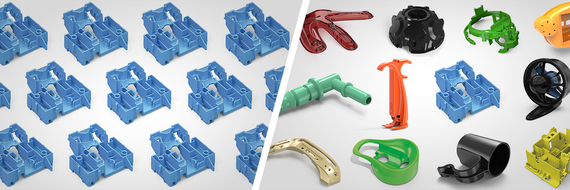For more than a decade, manufacturing companies have inched toward sustainability through improved business practices. They've cut emissions, implemented predictive machine maintenance and moved toward environmentally friendly chemicals and packaging. Newsweek even lists the top 500 "green" companies every year and manufacturers continue to show a strong presence. So we must be doing something right. Right?
Well we are, but there's still more to do. We have an opportunity to surge forward, rather than to continue the snail's pace of the past 10 years.
The key to leapfrogging our sustainability efforts lies in the new digital economy. We need to shift our thinking of how the manufacturing supply chain works to align our industry with today's on-demand expectations and requirements of consumers and businesses. Ultimately, we need to transform traditional processes into a modern model that is efficient, effective and sustainable all at the same time.
Traditional Manufacturing Is Not Optimized for Sustainability
Picture a manufacturing facility. What does it look like? Chances are you see a crowded factory floor with large pieces of equipment churning out mass quantities of the same part. In mass production processes, the focus is on producing as many of the same product with the shortest cycle times possible. While this model has contributed to the industry's cornerstone position in our economy, the need for mass customization and shorter product life cycles puts demands on this model to evolve to and adopt sustainable production practices for low volume, high mix manufacturing.
Legacy production systems require minimum production quantities in order to be cost-effective. The trade-off in cost is that product designers may end up producing much more than they need, or the financial threshold of large-scale manufacturing is too high. Especially in early-stage product development.
Manufacturing more products leads to more materials waste. This, in turn, increases fuel and energy consumption. Product developers and engineers end up getting stuck with extra costs and inventory, while materials are discarded and resources are squandered. We're quickly reaching the sustainability cap that's able to be achieved within this traditional model.
Mass Customization and Consumer Pressures
In contrast with the image of a traditional manufacturing floor churning out hundreds of thousands of the same item, digital manufacturing facilities are brighter, more efficient and more flexible. They're what will enable us to reach higher levels of sustainability, while offering customized products to meet unique customer needs.
Digital manufacturing is the modern way of manufacturing that creates the same gadgets, electronic parts, medical implants, food packaging and other items produced using the traditional process. The key difference is in how those parts got to the production floor. The process is vastly different and the change is driven by consumers' buying behaviors.
Take a medical device for example. Medical device companies are creating new models of their products every few years, with hardware modifications to accommodate individual professional preferences, unique needs of patients and connected solutions to other devices, an intranet system or even the cloud. This isn't mass production - it's mass customization.
And to beat the competition, designers and engineers have to create new hardware, test working prototypes and get the product to market faster than ever before. Consumer demand is impacting manufacturing speeds, quantities and even materials.
Digital Models Let Us Leap Forward
The digital manufacturing model is accomplished through the end-to-end integration of software and technology into the manufacturing and supply chain process, creating new opportunities to support innovation while honoring sustainable production. The integration of hardware and software creates a digital thread in manufacturing: starting with design, through quoting and all the way to the production floor. In digital manufacturing, each step is aligned, connected and improved, while reducing the need for time-consuming manual or physical processes.
Online design and production quoting, for example, allows for manufacturing collaboration and rapid feedback to point out potential issues and recommend changes to any part or product. Products no longer need to go through multiple production cycles to correct a defect or design change.
Front-end automated software systems create virtual prototypes from 3D CAD models. This provides the designer with "design for manufacturability" feedback that enables him or her to refine the design without the cost or lag time required by producing a physical part. These same virtual prototypes serve as the blueprint for the product and only enter production once the design has been perfected.
By reducing waste and also using recycled resins and metals, digital manufacturers can responsibly source material into an automated process with connected machines to produce these on-demand parts. While especially important for testing, access to quick, manageable inventory is key for creating fully functional small batch (or mass customized) products to meet real-time market demands.
Digital manufacturing pressures traditional systems to not only focus on producing better products, but to do so more efficiently. It also helps companies reduce waste, control inventory and switch production quickly as market trends change.
Sustainability Pays Off
According to the 2016 MIT Sloan Management Review and Boston Consulting Group sustainability report, "Investing for a Sustainable Future," companies that invest in sustainability-related business model changes are twice as likely to report profit from those efforts than those that do not. In fact tools like the GRI Sustainability Reporting Guidelines are now helping companies become even more transparent about their efforts.
By embracing a new digital manufacturing model and by working to shift from traditional approaches, companies can make a huge step toward reducing time and cost waste and conserving natural resources, while creating an architecture that supports more informed decision-making, efficient production and faster time-to-market.

